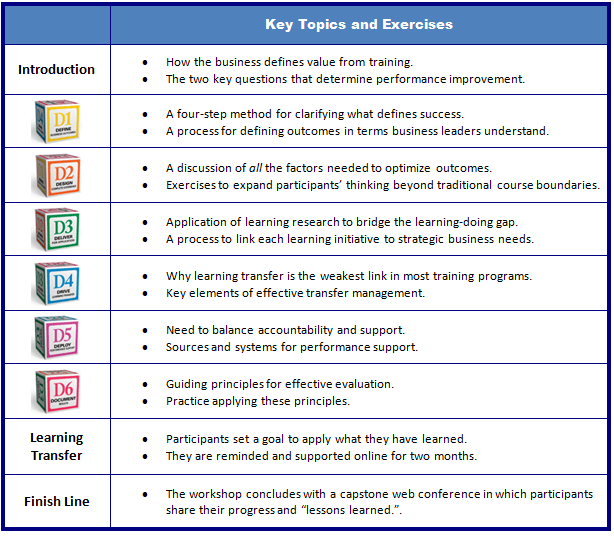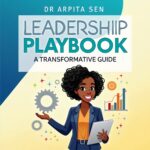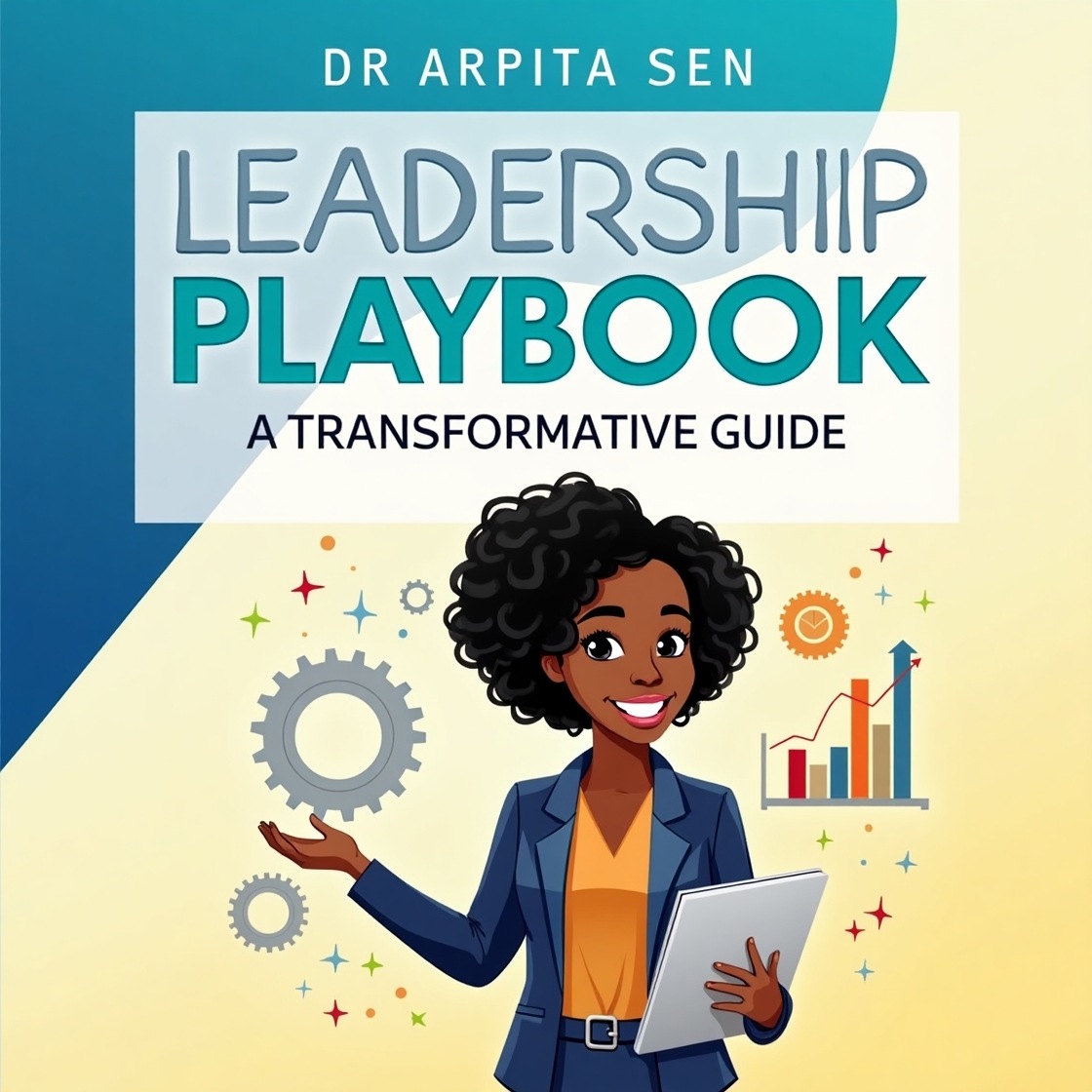In the fast-paced and ever-evolving landscape of the business world, organizations are continually striving to stay ahead of the curve. Human Resource (HR) professionals play a crucial role in ensuring that employees are equipped with the skills and knowledge needed to navigate these dynamic environments. Breakthrough learning, grounded in the 6D principles, has emerged as a transformative approach to HR development. This paradigm shift focuses on creating meaningful and sustainable learning experiences, thereby driving innovation and success within organizations.
The 6D Principles of Breakthrough Learning:
- Define: Breakthrough learning begins with a clear understanding of organizational goals and individual development needs. HR professionals need to define the specific skills, competencies, and knowledge areas that align with the company’s strategic objectives. By setting concrete learning objectives, organizations can tailor training programs to address the unique challenges they face.
- Design: The design phase involves creating engaging and effective learning experiences. HR professionals should leverage various instructional methods, including e-learning, simulations, and experiential activities, to cater to diverse learning styles. Designing learning paths that are interactive, immersive, and aligned with adult learning principles enhances retention and application of knowledge.
- Deliver: Effective delivery is crucial for breakthrough learning. Whether through traditional classroom training, virtual sessions, or blended learning approaches, HR professionals must ensure that the delivery method aligns with the content and the audience. Leveraging technology, such as learning management systems and virtual classrooms, enables flexible and scalable delivery options.
- Drive Engagement: Breakthrough learning emphasizes the importance of learner engagement. HR professionals should incorporate gamification, social learning, and collaborative platforms to enhance participation and interaction. Engaged learners are more likely to retain information and apply it in their roles, fostering a culture of continuous improvement.
- Deploy: Deployment involves implementing the acquired knowledge and skills in the workplace. HR professionals should provide opportunities for practical application, feedback, and ongoing support. This phase is crucial for reinforcing learning and ensuring that employees can seamlessly integrate new competencies into their daily tasks.
- Document and Evaluate: The final phase of breakthrough learning involves documenting the outcomes and evaluating the effectiveness of the training program. HR professionals should measure the impact on key performance indicators, such as employee productivity, satisfaction, and organizational goals. Continuous evaluation allows for refinement and optimization of future learning initiatives.

Significance in Various HR Scenarios:
- Talent Acquisition and Onboarding: Breakthrough learning enhances the onboarding process by quickly acclimating new hires to the company culture, processes, and expectations. It ensures a smooth transition and accelerates the integration of new employees into their roles.
- Leadership Development: HR professionals can use the 6D principles to design leadership development programs that cultivate the skills and mindset needed for effective leadership. This approach empowers leaders to navigate complex challenges and drive organizational success.
- Skill Enhancement and Reskilling: In the face of technological advancements and industry changes, breakthrough learning aids in upskilling and reskilling initiatives. HR professionals can efficiently close skill gaps by delivering targeted and relevant training programs.
- Employee Engagement and Retention: Engaged employees are more likely to stay with an organization. Breakthrough learning fosters a culture of continuous learning, making employees feel valued and invested in their professional development, ultimately contributing to higher retention rates.
- Organizational Change Management: During periods of change, breakthrough learning helps employees adapt to new processes, technologies, and ways of working. HR professionals can leverage these principles to facilitate a smooth transition and mitigate resistance to change.
- Global Workforce Development: In a globalized business environment, breakthrough learning provides a standardized yet adaptable approach to workforce development. HR professionals can design learning experiences that cater to diverse cultural contexts, ensuring a consistent and effective learning experience for employees worldwide.
Integration with SAM, ADDIE, and Agile: A Symbiotic Approach to Breakthrough Learning
SAM (Successive Approximation Model):
The Successive Approximation Model (SAM) harmonizes seamlessly with the 6D Principles, creating a powerful synergy that enhances the learning design process. SAM’s iterative nature aligns particularly well with the early phases of the 6D framework: “Define” and “Design.”
- Define: SAM’s iterative loops are instrumental in refining the definition of business outcomes. By quickly prototyping and testing, organizations can gather real-time feedback, ensuring that the learning objectives are precisely aligned with organizational goals.
- Design: SAM’s emphasis on rapid prototyping dovetails with the 6D design phase. Through iterative cycles of design and review, learning experiences can be fine-tuned to meet the diverse needs of the workforce. Constant feedback during this phase ensures that the content is engaging and effective.
ADDIE (Analysis, Design, Development, Implementation, Evaluation):
The ADDIE model, a staple in instructional design, complements the 6D Principles by providing a structured and systematic approach. The integration of ADDIE with the 6D framework strengthens the entire learning lifecycle.
- Analysis: The 6D “Define” principle aligns seamlessly with ADDIE’s analysis phase. Defining business outcomes in the initial stages ensures that subsequent analysis is tightly focused on addressing organizational needs.
- Design: The 6D “Design” phase complements ADDIE’s design stage, emphasizing the creation of engaging and impactful learning experiences. By incorporating 6D Principles into the design, organizations enhance the relevance and effectiveness of their instructional materials.
- Evaluation: Both the 6D Principles and ADDIE stress the importance of evaluation. Integrating ADDIE’s evaluation phase into the 6D “Document” phase ensures a comprehensive assessment of the learning initiative’s success, providing valuable insights for future improvements.
Agile:
Agile methodologies, celebrated for their adaptability, align seamlessly with the latter phases of the 6D Principles – “Drive,” “Deploy,” and “Document.” This integration introduces flexibility into the implementation and improvement processes.
- Drive: Agile’s iterative cycles align with the 6D “Drive” phase, where the focus is on application and implementation. Quick adjustments can be made based on feedback and emerging organizational needs, ensuring that learning translates seamlessly into improved job performance.
- Deploy: The 6D “Deploy” phase resonates with Agile’s emphasis on delivering a minimum viable product (MVP) quickly. Agile methodologies facilitate the swift deployment of learning initiatives, ensuring timely access to training materials.
- Document: Agile’s commitment to continuous improvement aligns with the 6D “Document” phase. By documenting results and lessons learned, organizations can feed this information back into the iterative design and deployment processes, fostering ongoing enhancement.
In conclusion, the integration of SAM, ADDIE, and Agile with the 6D Principles forms a symbiotic approach to breakthrough learning in HR scenarios. This amalgamation not only streamlines the instructional design process but also ensures that learning initiatives are dynamic, responsive, and aligned with the evolving needs of the organization. The result is a comprehensive and adaptable framework that propels organizations toward sustained success in their learning and development endeavors.











